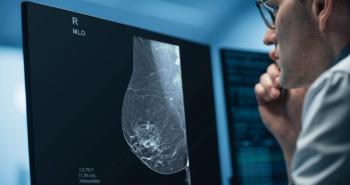
Digital Breast Tomosynthesis Screening Reduces False Positives
CHICAGO - More breast cancer detection, fewer false positives with digital tomosynthesis.
CHICAGO - Screening women with digital breast tomosynthesis (DBT) reduces callback rates and increases cancer detection rates,
False positives from digital mammography result in a high recall level for additional imaging or biopsy. Researchers from the University of Pennsylvania in Philadelphia sought to determine if DBT, which allows for 3-D reconstruction of breast tissue, would reduce these false positives and increase cancer detection.
Although DBT is typically used as a supplemental screening tool in many facilities, all patients screened for breast cancer at the Hospital of the University of Pennsylvania since October 2011 have undergone DBT.
"Every patient has had [DBT],” lead author Emily F. Conant, MD, said in a release. “We have not selected patients because of their risk or breast density or if they were willing to pay extra."
A total of 15,633 DBT images were compared to 10,753 digital mammographies by six radiologists trained in DBT interpretation. They found that, compared to digital mammography, the average recall rate using DBT decreased 10.40 percent to 8.78 percent, and the cancer detection rate increased from 3.51 to 5.24 (per 1,000 patients). The overall positive predictive value - the proportion of positive screening mammograms from which cancer was diagnosed - increased from 4.1 percent to 6.0 percent with DBT.
Recall rates did vary by radiologist, but according to Conant, “the ratio of callback to cancer decision rate improved significantly for our radiologists.”
Newsletter
Stay at the forefront of radiology with the Diagnostic Imaging newsletter, delivering the latest news, clinical insights, and imaging advancements for today’s radiologists.




























